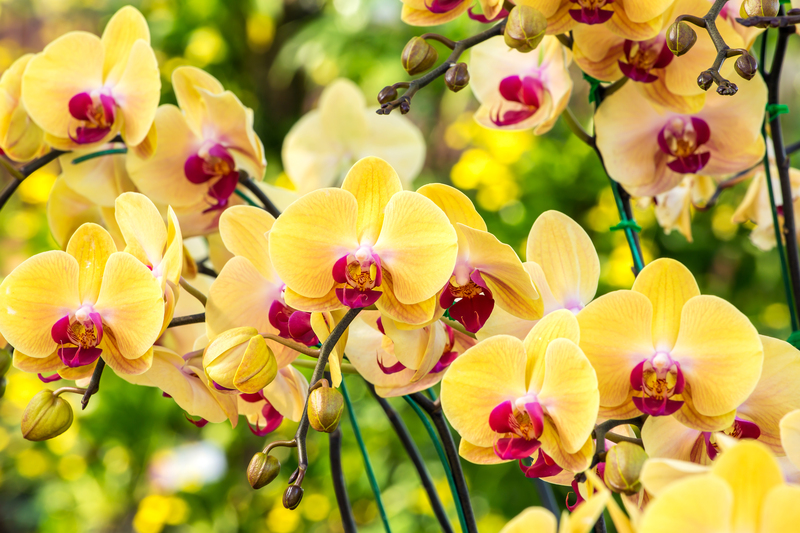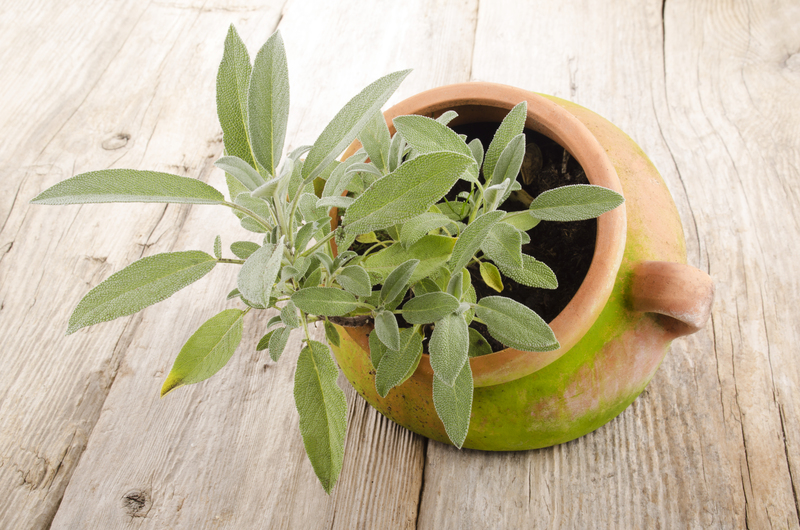Green Fingers Meet Wagging Tails: Garden Harmony
Posted on 14/06/2025
Green Fingers Meet Wagging Tails: Garden Harmony
Is it possible to nurture a thriving garden while ensuring the happiness and safety of your furry friends? Absolutely! For pet owners and gardening enthusiasts, creating an outdoor haven that is both lush and pet-friendly is not only possible, but can also be a rewarding experience. This comprehensive guide explores everything you need to know to achieve true garden harmony--where green thumbs and wagging tails coexist in perfect unity.
Why Harmonizing Gardens and Pets Is Essential
Balancing your love for blooming flora and your devotion to four-legged companions can be a challenge. Dogs may dig, cats may nibble on plants, and not all greenery is safe for pets. Establishing a pet-friendly garden is crucial for several reasons:
- Ensuring your pets' safety by avoiding toxic plants and harmful chemicals.
- Protecting your garden from playful or curious animals who might uproot or damage it.
- Enhancing well-being for both plants and pets through thoughtful design and care.
- Providing enrichment and exercise for your pets in a beautiful, stimulating environment.
Successful garden harmony ensures your green fingers and wagging tails thrive together.

Planning Your Pet and Plant Paradise
The Essentials of Pet-Safe Landscaping
When designing a dog-friendly garden or a cat-friendly outdoor space, planning is everything. Consider the following:
- Pet instincts: Digging, chewing, running and curiosity are natural. Your garden should account for these behaviors.
- Safe zones: Create areas where pets can roam freely and spaces where they're gently discouraged from entering.
- Easy maintenance: Select sturdy, low-maintenance plants and durable landscaping materials.
- Shade and shelter: Provide cool, shaded areas and shelter from the elements for your animals.
Choosing Non-Toxic, Pet-Friendly Plants
Some popular garden plants can be highly toxic to dogs and cats, while others are perfectly safe (even beneficial!). Here's how to fill your green oasis with pet-friendly flora:
Safe Plants for Pets:- Marigolds (Tagetes) - Cheerful annuals that are non-toxic and pest-repellent.
- Certain herbs: Basil, thyme, rosemary, and sage are safe choices.
- Sunflowers - Non-toxic and attract pollinators.
- Spider plant (Chlorophytum comosum) - A resilient, pet-safe house and garden plant.
- Camellias and rose bushes - Beautiful and non-toxic additions.
- Lilies - Highly poisonous to cats.
- Foxglove (Digitalis) - Toxic to both cats and dogs.
- Oleander - Very dangerous if ingested.
- Azaleas and rhododendrons.
- Daffodils, tulips, and sago palms.
Always double-check the safety of any plant variety before adding it to your pet's play space. Consult with local garden centers or the ASPCA's list of toxic and non-toxic plants for pets.
Design Tips for Harmonious Outdoor Spaces
Creating Pet Paths & Boundaries
Dogs love to patrol and cats love to explore. Designate clear paths using gravel, bark, or stepping stones to accommodate their natural movements. This strategy prevents them from trampling precious plants and directs their play away from vulnerable garden beds.
- Fencing: Secure fencing can deter escapes while protecting plants and pets alike.
- Living walls: Plant robust shrubs or hedges to act as green barriers, giving your garden structure and defining zones.
Dedicated Digging Spots
If your dog loves to dig, provide a designated digging corner with soft soil or a sandpit. Hide treats or toys to encourage them to use this spot, sparing your flowerbeds from destruction.
Water Features for Paws and Plants
A simple fountain or shallow pond can add beauty and offer a safe watering hole for pets. Choose sturdy, pet-safe water features--avoid chemicals and ensure pets can't fall or become trapped.
Safe Mulch and Ground Covers
Mulch discourages weeds and helps plants grow, but some types are hazardous to pets (like cocoa mulch). Instead, try:
- Cedar mulch - Aromatic and pet-friendly (though note some dogs may have allergies).
- Gravel or river rock - Great for drainage and deterring digging.
- Artificial turf - Durable and hassle-free, perfect for dog-heavy yards.
- Clover or creeping thyme - Green, soft, and pet-safe.
Nurturing Garden Harmony: Training Tips & Enrichment
Teaching Garden Etiquette
Achieving pet and garden coexistence comes down to training and positive reinforcement. Guide your pets gently to respect your green space:
- Reward good behavior - Offer treats or praise when pets use designated areas or paths.
- Supervise playtime - Be present, especially while they learn boundaries.
- Redirect curiosity away from forbidden zones with toys, pet-safe plants or captivating features.
- Be consistent with cues like "leave it" or "out."
Pet-Friendly Enrichment in the Garden
Gardens offer wonderful opportunities for mental and physical enrichment. Try these ideas:
- Agility courses - Set up simple barriers, hoops or tunnels for active dogs.
- Cat-safe climbing structures - Add logs, branches, or scratching posts for curious kitties.
- Dig zones - As noted earlier, create fun digging areas.
- Scatter safe, edible herbs for your pets to sniff and munch.
Common Challenges and Smart Solutions
Handling Garden Hazards
Even pet-safe gardens present hazards. Here's how to mitigate risks for wagging tails and thriving beds:
- Avoid harmful chemicals: Use pet- and environmentally friendly fertilizers, pesticides, and weedkillers.
- Secure compost bins: Many compostables, like coffee grounds and moldy food, are unsafe for pets.
- Shade and hydration: Always provide water and shade, especially in summer.
- Beware garden tools: Store sharp or toxic items safely away.
Protecting Plants from Curious Pets
How can you stop pets from nibbling, scratching, or uprooting your favorite flowers?
- Selective barriers - Fence off new beds or use mesh until plants establish.
- Natural deterrents - Sprinkle citrus peels or use commercial, pet-safe repellents.
- Grow Aromatic plants like rosemary and lavender, which deter most cats and dogs.
- Choose sturdy, resilient varieties that bounce back after an accidental trampling.
Managing Pet Waste in the Garden
Dog waste and cat scat can damage plants and introduce pathogens. Establish a "pet potty" spot, regularly remove waste, and never compost pet droppings meant for edible garden beds.
Boosting Biodiversity: The Ultimate Garden Harmony
Encouraging Wildlife, Safely
Well-designed pet-friendly gardens can also nurture bees, butterflies and birds. Use these tips:
- Provide pollinator plants - Coneflowers, sage and sunflowers attract beneficial insects.
- Install bird feeders and baths where pets can't disturb them.
- Grow native plants that thrive with little intervention and are resilient to playful pets.
- Leave a "wild corner" for insects and amphibians, cordoned off from pet traffic.
Balancing Pets and Birds
If you keep cats
, be especially careful to protect wildlife. Elevate birdbaths and feeders, or use motion-sensitive bells to warn off birds. Training is equally important to encourage your feline friends' curiosity without endangering local fauna.Sustainable Gardening with Pets
Eco-Friendly Materials and Practices
- Rainwater harvesting for garden and pet water bowls saves resources.
- Use natural, organic soil amendments and compost to keep toxins low.
- Mulch from recycled materials like grass clippings or wood chips.
- Solar garden lights enhance night-time safety for pets without increasing energy use.
Climate-Appropriate Planting
Choose plants suited to your local climate--they'll need less water, fewer chemicals, and stand up better to pet play. Drought-tolerant grasses, deep-rooted perennials and native shrubs are often great for both pets and planet.
Year-Round Garden Harmony: Seasonal Tips
- Spring: Watch for emerging bulbs (many are toxic), reseed pet play areas, and monitor for allergies.
- Summer: Keep water available and protect against heatstroke. Vivid, sturdy blooms like zinnias and marigolds are perfect now.
- Autumn: Rake regularly to avoid moldy leaves (which can be harmful), and enrich soil organically for next year.
- Winter: Provide shelter, use paw-safe melting agents, and stow chemicals securely.

Creating Indoor-Outdoor Flow for Pets
If you prefer container gardening, indoor plants, or patios, you can still achieve urban garden harmony for pet owners:
- Utilize pet grass mats or containers of wheatgrass for indoor cats.
- Choose pet-safe houseplants like Boston fern, African violet, or bamboo palm.
- Raised beds make it easier to keep delicate greenery out of pets' reach.
- Add catios or enclosed patios for safe fresh air and sunshine.
Conclusion: The Joys of Green Fingers and Wagging Tails in Harmony
Garden harmony isn't about compromise--it's about creativity, thoughtful planning, and appreciating the mutual benfits of a lush garden and joyful pets. When you nurture both your green fingers and your wagging-tailed friends, you're rewarded with beauty, tranquility and companionship all in one space.
By considering plant safety, pet-friendly landscaping, and sustainable practices, anyone can cultivate a pet paradise in their backyard or balcony. Whether you're just starting out or refining an existing space, let your garden be a sanctuary for every living thing that calls it home.
May your gardens thrive, your pets play, and your heart rejoice in the perfect fusion of flowers and friendship--where green thumbs meet wagging tails and garden harmony becomes a daily joy.

